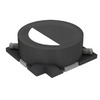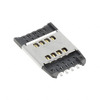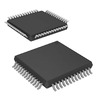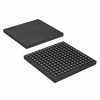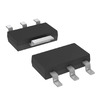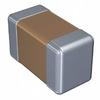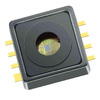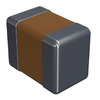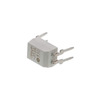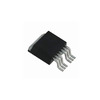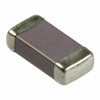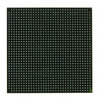Comparative Analysis of MSP430 and 89C51 Microcontrollers: Features and Applications
Single chip microcomputer is not just a chip with a specific logic function, but a computer system integrated into a chip. This article will introduce the characteristics, development, main components, advantages and disadvantages, applications and differences between MSP430 and 89C51 to help you better understand this microcontroller and provide strong support for embedded system design.
Catalog
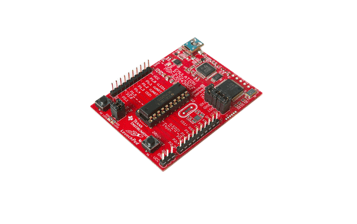
What is a Microcontroller?
Single-chip microcomputer is an integrated circuit chip. It uses very large scale integrated circuit technology to combine functions such as a central processing unit CPU with data processing capabilities, a variety of I/O ports, an interrupt system, a read-only memory ROM, a random access memory RAM, a timer/counter, as well as a display driver circuit, pulse wide modulation circuits, analog multiplexers, A/D converters and other circuits are integrated on a silicon chip to form a small but complete microcomputer system. Since the 1980s, microcontrollers have developed from 4-bit and 8-bit to the current 300M high-speed microcontrollers.
Compared with general-purpose microprocessors used in personal computers, it requires no external hardware, thus saving costs. It has a higher level of integration, but is limited by established specifications and has relatively specific functions. Its biggest advantage is that it is small and suitable for embedding in instruments. However, it has smaller storage capacity and simpler input and output interfaces.
Overview of MSP430 Microcontroller
MSP430 microcontroller is a series of 16-bit microcontrollers manufactured by Texas Instruments with ultra-low power consumption as its main feature. It uses reduced instruction set (RISC) and is a mixed-signal processor that integrates digital and analog modules and processors. It has the advantages of low voltage, low power consumption, high integration, as well as good anti-interference ability and reliability. Therefore, it has been widely used in many fields such as wireless communications, automotive electronics, smart homes, medical equipment, and industrial automation.
Replacements and Equivalents
• CC1352P
• CC1352R
• CC3200
Features of MSP430
Convenient and Efficient Development Environment
The MSP430 series has three types of devices, namely OTP type, FLASH type and ROM type, and their development methods are different. For OTP and ROM type devices, we usually need to use an emulator for development, and then perform programming or masking of the chip. FLASH type devices have a very convenient development and debugging environment. Since the device has an on-chip JTAG debugging interface and an electrically erasable FLASH memory, it can download the program to FLASH first, and then control the running of the program through software in the device. In this way, it can read on-chip information through the JTAG interface for designers to debug, without the need for emulators and programmers. For FLASH type devices, it also contains other convenient development tools and interfaces, such as hardware timers, ADC, etc. Therefore, in addition to assembly language and C language, we can also choose other related development languages according to specific application needs.
Ultra-Low Power Consumption
The reason why MSP430 microcontroller has ultra-low power consumption is because it is unique in reducing the chip's power supply voltage and flexible and controllable operating clock.
First of all, the power supply voltage range of the MSP430 series microcontroller is 1.8 to 3.6V. Therefore, when running at a clock frequency of 1MHz, the minimum current of the chip is about 165μA. At the same time, the lowest power consumption in RAM retention mode is only 0.1μA. Secondly, this series of microcontrollers has a unique clock system design. In the MSP430 series, there are two different clock systems, including the basic clock system and the frequency-locked loop (FLL and FLL+) clock system, as well as the DCO digital oscillator clock system. We only need to use a crystal oscillator (such as DT-26 OR DT-38) to provide clocks for the CPU and various functional requirements. In addition, these clocks can be turned on and off under the control of instructions, allowing effective control of overall power consumption.
The system operates in different working modes, which results in significant differences in chip power consumption. There are two active modes (AM) and five low-power modes (LPM0~LPM4) in the system. In real-time clock mode, the power consumption of the chip can reach 2.5μA's high level, while in RAM hold mode, the power consumption of the chip can be reduced to a minimum of 0.1μA.
Rich Resources in the Microcontroller
Each series of MSP430 series microcontrollers integrates a wealth of on-chip and on-chip peripherals, including watchdog (WDT), analog comparator A, timer_A0, timer_A1, timer_B0, UART , SPI, I2C, hardware multiplier, LCD driver, 10-bit/12-bit ADC, 16-bit Σ-Δ ADC, DMA, basic timer, real-time clock (RTC) and USB controller, etc.
Fast Computing Speed
The MSP430 series of microcontrollers can achieve a 40ns instruction cycle driven by a 25MHz crystal. Its 16-bit data width, 40ns instruction cycle, and multifunctional hardware multiplier enable it to implement certain algorithms for digital signal processing (such as FFT, etc.).
Strong Processing Ability
The MSP430 series microcontroller is a 16-bit microcontroller that adopts a reduced instruction set (RISC) structure and has rich addressing modes. The core instructions of this series of microcontrollers are simple, and there are also a large number of analog instructions available. In addition, a large number of registers and on-chip data memory can participate in a variety of operations, providing efficient table lookup processing instructions. These characteristics enable us to compile efficient source programs.
Development of MSP430 Microcontroller
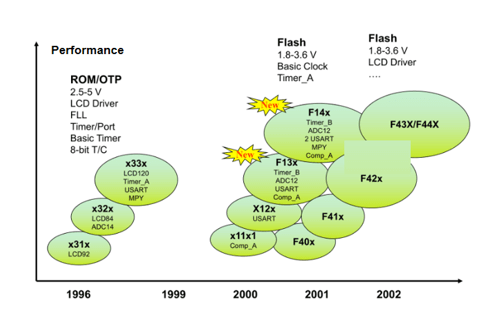
Main Components of MSP430 Microcontroller
Memory
The program memories of each series of MSP430 microcontrollers include OTP, ROM, EPROM and FLASH types.
CPU
The CPU of the MSP430 series microcontroller is basically the same as a general-purpose microprocessor, but it adopts a control-oriented structure and instruction system in its design. The MSP430 core CPU structure is designed with a streamlined instruction set and high transparency, including internal instructions executed by hardware and simulation instructions based on existing hardware structures. This design improves the instruction execution speed and efficiency, thereby enhancing the real-time processing capabilities of the MSP430.
Peripheral Modules
It is connected to the CPU through MAB, MDB, and interrupt service and request lines. Peripheral modules in various MSP430 product series may differ in both type and quantity. They are usually a combination of peripheral modules such as clock module, watchdog, port, basic timer, timer A, timer B, comparator A, serial port 0, serial port 1, LCD driver, analog-to-digital converter, analog-to-digital converter, hardware multiplier, DMA controller, etc.
What are the Advantages and Disadvantages of MSP430 Microcontroller?
Advantages of MSP430 Microcontroller
Easy to program: MSP430 development tools are simple and easy to use, and users can operate using a variety of programming languages, such as C language and assembly language.
Affordable price: Compared with other microcontroller series, its price is more affordable and suitable for use in low-cost applications.
High-precision simulation: It has built-in high-precision analog circuits, capable of accurate analog signal collection and processing.
Low power consumption: The MSP430 series adopts a variety of low-power technologies, allowing it to consume very little power in standby mode.
Support multiple communication protocols: It supports multiple communication protocols such as I2C, SPI, UART, etc. to facilitate communication with other devices.
Disadvantages of MSP430 Microcontroller
Limited development resources: In contrast to other microcontroller series, MSP430 has relatively few development resources, so users need to find relevant information and solve problems by themselves.
Small storage capacity: Its storage capacity is relatively small and is not suitable for application scenarios that require a large number of programs and data storage.
Lower performance: Compared with other high-performance microcontroller series, MSP430 runs slower and is not suitable for use in high-performance application scenarios.
What’s the Difference between MSP430 and 89C51?
MSP430 and 89C51 are both microcontrollers, and they differ in the following aspects.
First of all, since the 89C51 series microcontroller has an 8-bit internal bus, its internal function modules are basically 8-bit. Although the internal functional modules have been significantly increased, the structure itself has great limitations, especially the addition of analog functional components is more difficult. In contrast, the basic architecture of the MSP430 series is 16-bit. Internally, although the data bus is converted, there is still a 16-bit bus, and it is a hybrid structure. Therefore, for this open architecture, whether it is to expand 8-bit functional modules or 16-bit functional modules, such as extending functional modules such as analog/digital conversion or digital/analog conversion, are very convenient. This is also the reason why the MSP430 series of products and their functional components are increasing rapidly.
Secondly, their development tools are different. 89C51 is the first microcontroller to enter China, so people have created many suitable development tools. However, how to implement online programming is still a big problem. For the MSP430 series, due to the introduction of Flash program memory and JTAG technology, not only the development tools have become easy to use, but the price is also relatively low. In addition, it supports online programming.
Furthermore, the 89C51 is an 8-bit microcontroller. It uses a complex instruction set called "CISC" with 111 instructions. The MSP430 microcontroller is a 16-bit microcontroller that adopts a reduced instruction set structure with only 27 concise instructions. At the same time, a large number of analog instructions utilize numerous registers and on-chip data memory, allowing them to participate in a variety of operations. These core instructions are single-cycle instructions, powerful and fast.
Finally, the power supply voltage of the 89C51 microcontroller itself is 5 volts. It has two low-power consumption modes, namely standby mode and power-down mode. Under normal circumstances, its power consumption current is 24mA, while in standby mode, its power consumption current is still 3mA. Even in power-down mode, its supply voltage can drop to 2V. However, in order to save the data in the internal RAM, it also needs to provide about 50uA of current. In comparison, the MSP430 series of microcontrollers have superior low-power performance. Therefore, MSP430 is more suitable for battery-powered instruments and meter products.
What are the Applications of MSP430 Microcontroller?
• Data Acquisition System: Featuring a 12-bit ADC and comparator, it integrates various components such as multiple timers and USART onto a single chip, rendering it well-suited for applications in data acquisition systems.
• Sensor Node: Due to its low power consumption, it is suitable for wireless sensor networks and can effectively extend the battery life of sensor nodes.
• Automatic Control System: MSP430 can be used in automatic control systems such as industrial control, home automation, and building automation systems. Its high performance and low power consumption make it suitable for long-running control applications.
• Portable Devices: Its extremely low power consumption makes it ideal for portable devices such as watches, handheld calculators, sports trackers and medical devices.
• Smart Instrument: The MSP430 microcontroller utilizes Flash memory as its program storage, supporting JTAG online programming for convenient tasks such as program download, simulation, debugging, and upgrades. This feature has led to its widespread adoption in the smart meter field.
• Smart Meters: MSP430 is widely used in smart meters. It monitors power usage, performs power factor correction, and communicates functions while maintaining low power consumption, significantly extending battery life.
• Medical Equipment: Due to the low power consumption and small package of MSP430, it is widely used in medical equipment, including portable medical instruments and patient monitoring equipment.
Frequently Asked Questions [FAQ]
1. Is MSP430 16-bit?
The MSP430 family of ultra-low- power 16-bit RISC mixed-signal processors from Texas Instruments (TI) provides the ultimate solution for battery-powered measurement applications.
2. What software is used for MSP430?
The MSP430Ware software is a collection of design resources for developing with MSP430 MCUs including a wide selection of highly abstracted software libraries. The software is available as a component of Code Composer Studio™ IDE desktop and cloud versions, or as a standalone package.
3. Why is MSP430 low power?
Low power operation is a key feature of the MSP430. Its design gives very low leakage, and it operates from a single supply rail. This gives an extremely low current drain when the processor is in standby mode. Several low power modes are supported, which balance the needs of different applications.
4. What is the difference between Arduino and MSP430?
The main difference between MSP430 and Arduino: Arduino is built for fast success when playing with it. The drawback is that it uses generic libraries to do the simplest things. Like the PC where a simple 1-line "hello world" program loads tons of DLLs. MSP, however, requires that you actually do something.
5. How does MSP430 work?
The MSP430 microcontroller is a mixed-signal processor. It provides a single-chip solution by integrating several different functional analog circuits, digital circuit modules, and microprocessors on a single chip for practical application requirements.
About us
ALLELCO LIMITED
Read more
Quick inquiry
Please send an inquiry, we will respond immediately.
→ Previous

In the modern household, a microwave oven is as essential as any major appliance, yet its energy demands and efficiency are often overlooked. The primary power requirement for a microwave varies significantly depending on the model and size, ranging from a modest 500 watts for compact units to a rob...
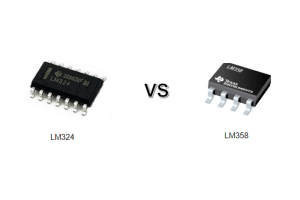
The main function of the operational amplifier is to amplify the amplitude of the input signal so that the weak signal can be amplified to an amplitude range suitable for subsequent circuit processing. Today, we will learn about the differences between the two operational amplifiers LM324 and LM358....
→ Next

How to Calculate the Power Usage of a Microwave Oven?
on May 6th

LM324 vs LM358: Which Operational Amplifier is Best for Your Projects
on April 29th
Popular Posts
-

What is GND in the circuit?
on January 1th 3272
-

RJ-45 Connector Guide: RJ-45 Connector Color Codes, Wiring Schemes, R-J45 Applications, RJ-45 Datasheets
on January 1th 2815
-

Understanding Power Supply Voltages in Electronics VCC, VDD, VEE, VSS, and GND
on November 20th 2642
-

Fiber Connector Types: SC Vs LC And LC Vs MTP
on January 1th 2265
-

Comparison Between DB9 and RS232
on January 1th 1882
-

What Is An LR44 Battery?
Electricity, that ubiquitous force, quietly permeates every aspect of our daily lives, from trivial gadgets to life-threatening medical equipment, it plays a silent role. However, truly grasping this energy, especially how to store and efficiently output it, is no easy task. It is against this background that this article will focus on a type of coin cell battery that may seem insignificant on the...on January 1th 1846
-

Understanding the Fundamentals:Inductance Resistance, andCapacitance
In the intricate dance of electrical engineering, a trio of fundamental elements takes center stage: inductance, resistance, and capacitance. Each bears unique traits that dictate the dynamic rhythms of electronic circuits. Here, we embark on a journey to decipher the complexities of these components, to uncover their distinct roles and practical uses within the vast electrical orchestra. Inductan...on January 1th 1808
-

What Is RF and Why Do We Use It?
Radio Frequency (RF) technology is a key part of modern wireless communication, enabling data transmission over long distances without physical connections. This article delves into the basics of RF, explaining how electromagnetic radiation (EMR) makes RF communication possible. We will explore the principles of EMR, the creation and control of RF signals, and their wide-ranging uses. The article ...on January 1th 1801
-

CR2430 Battery Comprehensive Guide: Specifications, Applications and Comparison to CR2032 Batteries
What is CR2430 battery ?Benefits of CR2430 BatteriesNormCR2430 Battery ApplicationsCR2430 EquivalentCR2430 VS CR2032Battery CR2430 SizeWhat to look for when buying the CR2430 and equivalentsData Sheet PDFFrequently Asked Questions Batteries are the heart of small electronic devices. Among the many types available, coin cells play a crucial role, commonly found in calculators, remote controls, and ...on January 1th 1799
-

Comprehensive guide to hFE in transistors
Transistors are crucial components in modern electronic devices, enabling signal amplification and control. This article delves into the knowledge surrounding hFE, including how to select a transistor's hFE value, how to find hFE, and the gain of different types of transistors. Through our exploration of hFE, we gain a deeper understanding of how transistors work and their role in electronic circu...on November 20th 1782








